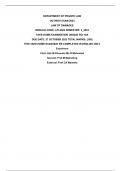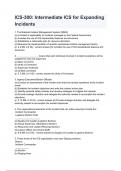Summary
Summary Physical Sciences Grade 9 IEB Syllabus Notes
- Course
- Physical Sciences
- Institution
- 9th Grade
A summary of the Physical Science Grade 9 content including the scientific method, the atom and the periodic table, electrons in an atom, chemical formulae, chemical equations, reactions in oxygen, acids and bases, forces and motion. Everything you need in one go!
[Show more]












